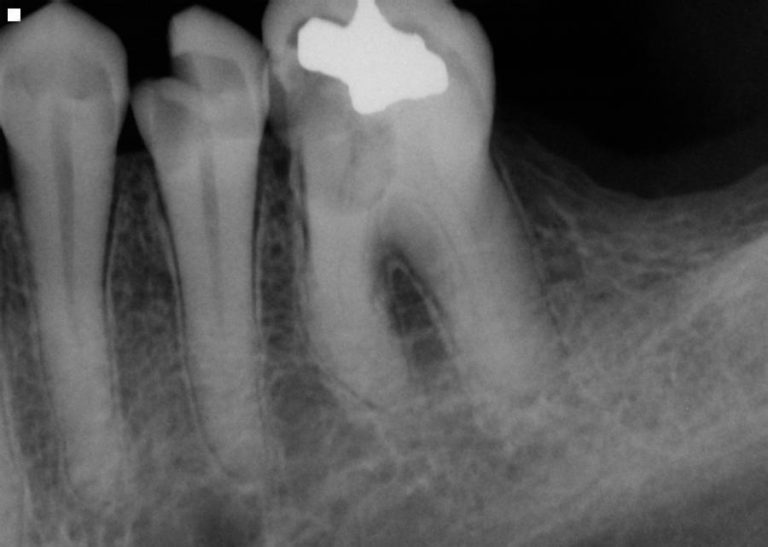Last Updated on 3 weeks by DR. ALBIN SIPES
Root canal retreatment through a crown is a procedure to remove and replace the filling material in a root canal that has been previously treated. This can be done when a previous root canal treatment fails or if there is recurrent infection or pain in the tooth.
During the retreatment, the crown is temporarily removed, the old filling material is taken out, and the canal is thoroughly cleaned and reshaped before new filling material is placed. This procedure can help save the tooth and alleviate any symptoms or complications associated with the previous root canal.
Reasons For Root Canal Retreatment
Root canal retreatment may be necessary due to several reasons. One common cause is incomplete initial treatment. When the first root canal procedure fails to effectively clean and seal the tooth, retreatment becomes necessary. Sometimes, persistent symptoms or infection can also lead to retreatment.
The tooth may continue to cause pain, swelling, or sensitivity even after the initial procedure. Another reason for retreatment could be a new infection or damage to the tooth. This can occur if the crown becomes loose or if bacteria enter the tooth through cracks or cavities.
In such cases, retreatment is required to address the new infection and preserve the tooth’s health. If you experience any signs of inadequate root canal treatment, consult your dentist to determine if retreatment is necessary.
Assessing The Need For Crown Placement
Assessing the need for crown placement involves checking the structural integrity of the tooth. Evaluating the root canal condition is another crucial aspect to consider. Additionally, the patient’s dental health should be taken into account before deciding on retreatment through a crown.
It is important to ensure that the tooth can support the crown and withstand any potential future complications. By thoroughly examining these factors, dentists can determine whether crown placement is necessary for root canal retreatment. It is essential to prioritize the patient’s well-being and the long-term success of the procedure.
Benefits Of Crown Placement
Crown placement offers several benefits, including protection and stabilization of the tooth, restoring natural aesthetics, and long-term durability and reliability. The crown functions as a protective barrier, shielding the tooth from further damage or infection. It also helps to stabilize the tooth, ensuring proper alignment and bite strength.
Additionally, crown placement restores the natural appearance of the tooth, ensuring a seamless integration with the surrounding teeth. The material used for crowns can be color-matched to blend with the existing teeth, resulting in a natural-looking smile. Moreover, crowns are known for their long-lasting durability and reliability.
They can withstand the pressures of daily chewing and biting, ensuring a strong and functional tooth for years to come. Crown placement truly offers numerous advantages when it comes to root canal retreatment, providing both aesthetic and functional benefits.
The Procedure Of Crown Placement
The procedure of crown placement involves preparing the tooth for the crown, taking impressions for crown fabrication, temporarily fitting the crown, and finally placing the permanent crown. First, the tooth is carefully prepared to ensure a proper fit for the crown.
Next, impressions of the tooth are taken to create a custom crown that matches the rest of your teeth. After that, a temporary crown is placed to protect the tooth while the permanent crown is being made. Finally, the permanent crown is cemented onto the tooth, providing a durable and aesthetically pleasing solution.
This procedure restores the function and appearance of the tooth, allowing you to maintain a beautiful smile.
Determining The Need For Crown Extraction
Determining the need for crown extraction involves assessing failed root canal treatment, structural damage, and severe tooth decay. Evaluating the condition of a tooth after a root canal retreatment is crucial for proper treatment planning. Failed root canal treatment can result from a variety of factors such as missed canals or inadequate cleaning.
Additionally, structural damage caused by trauma or cracks can compromise the tooth’s integrity and require crown extraction to preserve the tooth. Severe tooth decay can also necessitate crown removal as it can affect the underlying structure. Proper diagnosis and evaluation of these factors help determine whether a crown extraction is necessary for successful root canal retreatment and restoration of dental health.
The Process Of Root Canal Retreatment And Crown Placement
Root canal retreatment involves removing the existing crown and re-treating the root canal. Afterward, a new crown is fabricated and placed on the treated tooth. The process aims to address any issues that may have arisen since the initial root canal treatment.
By removing the old crown, the dentist gains access to the root canal, allowing them to clean and disinfect it thoroughly. The canals are then re-treated to ensure all infection is eliminated. Once the root canal is sealed, a new crown is created to fit perfectly over the treated tooth.
This new crown not only restores the tooth’s functionality but also provides additional protection. With root canal retreatment and crown placement, patients can maintain their oral health and preserve their natural teeth for a longer time.
Frequently Asked Questions On Root Canal Retreatment Through Crown
Can A Root Canal Be Redone Through A Crown?
Yes, a root canal can be retreated through a crown if there are issues with the previous treatment. This procedure involves removing the crown, accessing the existing root canal filling, cleaning the canal, and refilling it. It’s an effective way to save a tooth and prevent further complications.
Why Would A Root Canal Need Retreatment?
A root canal may require retreatment due to various reasons such as reinfection, incomplete cleaning of canals, or the presence of hidden canals. Symptoms like persistent pain or swelling might indicate the need for retreatment. It’s crucial to consult your dentist for an evaluation to determine the best course of action.
Is Root Canal Retreatment Painful?
Root canal retreatment is usually done under local anesthesia, ensuring minimal discomfort during the procedure. You may experience slight tenderness or soreness after the treatment, which can be managed with over-the-counter pain relievers. Your dentist will provide proper post-treatment care instructions to alleviate any potential discomfort.
Does Retreatment Affect The Crown?
Root canal retreatment may require the removal and replacement of the crown but it depends on the individual case. If the crown is in good condition, it can be preserved. However, if it is damaged, the crown might need to be replaced after the retreatment to ensure the tooth’s structural integrity.
How Long Does Root Canal Retreatment Take?
The duration of root canal retreatment depends on several factors such as the complexity of the case and the number of canals involved. Generally, the procedure can be completed in one or two visits, each lasting about 60 to 90 minutes.
Your dentist will provide a more accurate estimate based on your specific situation.
Can All Teeth Have Root Canal Retreatment?
Not all teeth are suitable for root canal retreatment. Factors such as the extent of damage, anatomical variations, and the tooth’s overall condition play a role in determining if retreatment is possible. Your dentist will evaluate your tooth thoroughly to determine the best treatment option for you, whether it’s retreatment or extraction.
Conclusion
Root canal retreatment through crown is a reliable and effective treatment option that can save a tooth from extraction. By removing any infection or complications that may have arisen after an initial root canal, this procedure provides a second chance for the tooth to heal and function properly.
With advancements in technology and techniques, dentists can now perform the retreatment process with improved precision and success rates. Additionally, the use of a crown ensures the tooth’s strength and stability are restored, allowing for optimal chewing and biting functionality.
It’s important to note that regular dental check-ups and good oral hygiene practices are essential to maintain the longevity of the treated tooth. So, if you are experiencing any discomfort or issues with a previously treated tooth, don’t hesitate to consult with your dentist about the possibility of root canal retreatment through a crown.
Your smile deserves the best care and attention it can get!





